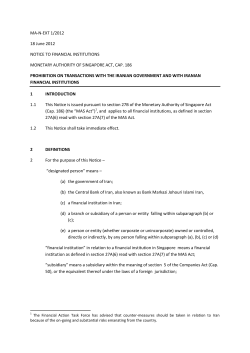
35
Jundishapur Journal of Microbiology (2008); 1(1): 35-37 35 __________________________________________________________________________________________ Case report Extensive tinea corporis due to Trichophyton rubrum on the trunk Ali Zarei Mahmoudabadi1, Reza Yaghoobi2 1 Department of Medical Mycoparasitology, School of Medicine, and Infectious Diseases and Tropical Medicine Centre, Ahvaz Jundishapur University of Medical Sciences, Ahvaz, Iran 2 Department of Dermatology, School of Medicine, Ahvaz Jundishapur University of Medical Sciences, Ahvaz, Iran Received: January 2008 Accepted: March 2008 Abstract In the present cases we describe two normal patients who developed extensive tinea corporis that was complicated by multiple subcutaneous papules and pustule caused by Trichophyton rubrum. This form of dermatophytosis has only rarely been described. Two 18 and 20-year-old men were examined for tinea corporis. Direct KOH preparations from skin scrapings showed septate branching mycelium and arthroconidia in both patients. T. rubrum was also identified in cultures. Keywords: Trichophyton rubrum, Dermatophytosis, Tinea corporis Cases history Case 1; an 18-year-old man living in a village (Ahvaz) was presented to our clinic with a four month history of pruritus involving the trunk. Physical examination revealed extensive erythematous, sharply demarcated lesions with pustules on the trunk (Fig. 1a). Case 2; a 20-year-old man living in the rural area of Ahvaz, suspected to tinea corporis was examined. Patient had a history of more than four months duration of multiple erythematous, scaly abscesses on his trunk and chest (Fig. 1b). Psoriasis like lesions was also detected on the case. Both patients did not receive any treatment for fungal diseases. Skin scrapings were collected using sterile scalpel from both patients. Microscopic examination of KOH preparations revealed hyaline septate branching mycelium with several arthroconidia. The samples were also cultured on to slants of Mycobiotic agar (Difco, East Molesey, UK) and incubated aerobically at ambient temperature for four weeks. T. rubrum was identified in both cases based on colony morphology on Sabouraud's dextrose agar, pigment production on corn meal agar with 2% dextrose, lack of in vitro hair perforation, and negative for urease enzyme. In the present study, patients were successfully treated with systemic griseofulvin and topical clotrimazole daily for around six weeks. Discussion Dermatophytosis is an infection of the hair, nail and skin caused by dermatophytes species. Dermatophytes are keratinophilic fungi that invade keratinized organs of human and animals (hair, nail and skin). Jundishapur Journal of Microbiology (2008); 1(1): 35-37 36 __________________________________________________________________________________________ Clinically eight types of tinea have been described in human. Tinea corporis is one of the most important types and relatively common dermatophytosis in the world [1, 2]. The disease is usually restricted to the stratum corneum of the epidermis. The most common etiologic agents of tinea corporis are T. rubrum and T. mentagrophytes [2-4]. T. rubrum is an anthropophilic dermatophyte and more common in Iran [1, 3-5]. We describe two patients who had extensive tinea corporis caused by T. rubrum in Ahvaz, Iran. Tinea corporis is a cutaneous infection with worldwide distribution. (a) (b) Fig. 1: Extensive tinea corporis due to T. rubrum (a, b) The disease is more common in warm humid climates. Chadeganipour et al. [1] have reported tinea corporis as the most prevalent clinical type of dermatophytosis in Isfahan. Tinea corporis typically presents an annular lesion with scales. However, several authors have reported clinical atypical forms of disease [6-8]. Hoetzenecker et al. [7] reported a case of widespread dermatophytosis with T. rubrum in an immunocompetent patient. Grau Salvat et al. [9] reported a 71-yearold man with disseminated erythematous and squamous lesions, which were treated with corticosteroid creams for seven months. Serarslan [10] also reported a case of widespread tinea corporis due to T. rubrum, which was treated with topical corticosteroid. Generally, dermatophytes can enter the dermis through hair follicles. T. rubrum is an anthropophilic dermatophyte causing tinea in humans. Anthropophilic species are usually associated with chronic lesions in humans. T. rubrum usually causes ringworm of the foot. Superficial infection with T. rubrum is often non inflammatory. Dahl and Grando [11] believe that T. rubrum has adapted to the skin of human beings. However, extensive lesions and multiple subcutaneous abscesses due to T. rubrum were identified in immunocompromised patients [12, 13]. In conclusion T. rubrum was isolated from two patients, with extensive tinea corporis, in Ahvaz. T. rubrum is more prevalent in Iran. However, rare cases of extensive tinea corporis due to T. rubrum have been reported in the current study. Acknowledgment We are grateful of the Department of Mycoparasitology, Ahvaz Jundishapur University of Medical Sciences for their help. Jundishapur Journal of Microbiology (2008); 1(1): 35-37 37 __________________________________________________________________________________________ References 1) Chadeganipour M, Shadzi S, Dehghan P, Movahed M. Prevalence and aetiology of dermatophytoses in Isfahan, Iran. Mycoses 1997; 40: 321-324. 2) Maraki S, Nioti E, Mantadakis E, Tselentis Y. A 7-year survey of dermatophytoses in Crete, Greece. Mycoses 2007; 50: 481-484. 3) Chadegani M, Momeni A, Shadzi S, Javaheri MA. A study of dermatophytoses in Esfahan. Mycopathologia 1987; 98: 101104. 4) Omidynia E, Farshchian M, Sadjjadi M, Zamanian A, Rashidpouraei R.A study of dermatophytoses in Hamadan, the governmentship of West Iran. Mycopathologia 1996; 133: 9-13. 5) Rastegar Lari A, Akhlaghi L, Falahati M, Alaghehbandan R. Characteristics of dermatophytoses among children in an area south of Tehran, Iran. Mycoses 2005; 48: 32–37. 6) Kim HS, Cho BK, Oh ST. A case of tinea corporis purpurica. Mycoses 2007; 50: 314–316. 7) Hoetzenecker W, Schanz S, Schaller M, Fierlbeck G. Generalized tinea corporis due to Trichophyton rubrum in ichthyosis vulgaris. Journal of the European Academy of Dermatology and Venereology 2007; 21: 1129-1131. 8) Kobayashi M, Ishida E, Yasuda H, Yamamoto O, Tokura Y. Tinea profunda cysticum caused by Trichophyton rubrum. Journal of the American Academy Dermatology 2006; 54: S11-S13. 9) Grau Salvat C, Pont Sanjuan V, SánchezCarazo JL, Vilata Corell JJ, Aliaga Boniche A. Disseminated inflammatory tinea: An unusual presentation. Revista Iberoamericana de Micologia 1998; 15: 100-102. 10) Serarslan G. Pustular psoriasis-like tinea incognito due to Trichophyton rubrum. Mycoses 2007; 50: 523–524. 11) Dahl MV, Grando SA. Chronic dermatophytosis: what is special about Trichophyton rubrum? Advances in Dermatology 1994; 9: 97-110. 12) Engelhard D, Or R, Naparstek E, Leibovici V. Treatment with itraconazole of widespread tinea corporis due to Trichophyton rubrum in a bone marrow transplant recipient. Bone Marrow Transplantation 1988; 3:517-519. 13) Meinhof W, Hornstein OP, Scheiffarth F. Multiple subcutaneous Trichophyton rubrum abscesses. Pathomorphosis of a generalized superficial tinea due to impaired immunological resistance. Hautarzt 1976; 27: 318-327. Address for Correspondence: Ali Zarei Mahmoudabadi, Department of Medical Mycoparasitology, School of Medicine, Ahvaz Jundishapur University of Medical Sciences, Ahvaz, Iran Tel: +98611 3330074; Fax: +98611 3332036 Email: zarei40@hotmail.com
© Copyright 2025





















